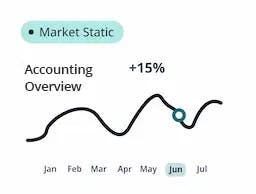
Admin
2024-01-16

In today&pos;s competitive job market, attracting and hiring top talent is crucial for business success. Adopting efficient tactics and industry standards is crucial to a productive hiring process in 2024. Additionally, effective recruitment can be achieved by evolving with technology. Using HRMS Software is one of the best effective approaches in the recruitment process.
Contact us?
In this blog, we will provide you with a quick guide to the seven stages of an efficient recruitment process. By following these steps, you can streamline your hiring efforts, attract the right candidates, and build a talented and diverse workforce.
What is Recruitment Process?
Managing people in an organization is the responsibility of human resources. They are accountable for enabling an organization's main objectives, and they carry out this duty by efficiently managing their position and putting a priority on staff development as the most important resource for the business.
What is the first stage in developing human capital for an organization? Recruitment. HR's recruitment process has two main objectives: to hire the best applicants as quickly as possible while spending as little money as possible.
Finding competent people swiftly and effectively demands a good recruitment process, which calls for deliberate planning and ongoing assessment. The following steps are becoming common in the hiring process:
- Identifying the applicant who best fits the position in terms of abilities, experience, and personality
- Gathering and evaluating resumes
- Conducting interviews for jobs
- Choosing the new employee
- Working on the onboarding procedure
Here are further specifics on what to prioritize during recruitment to assist you in setting up an efficient recruitment process or in reviewing your present approach.
How does HRMS Software help in recruitment?
One of the most effective approaches in the recruitment process is utilizing HRMS Software. Why? Let’s look at the advantages here:
Firstly, an HRMS enables the creation and management of a centralized candidate database, making it easier to store, search, and retrieve candidate information. It simplifies the process of sourcing and shortlisting candidates. Secondly, HRMS platforms often include applicant tracking system (ATS) functionality, which allows recruiters to manage job postings, track applications, and schedule interviews seamlessly. ATS features automate various recruitment tasks, such as resume parsing, application screening, and interview scheduling, saving time and effort.
Moreover, an HRMS provides tools for efficient collaboration and communication within the recruitment team. Recruiters can collaborate on candidate evaluation, share feedback, and track the progress of hiring processes. Additionally, HRMS platforms often integrate with job portals, social media platforms, and career websites, enabling recruiters to post job openings across multiple channels and reach a wider pool of candidates.
Lastly, HRMS systems offer reporting and analytics capabilities, providing insights into recruitment metrics, such as time-to-hire, cost-per-hire, and source of hire. This data enables recruiters to evaluate the effectiveness of their recruitment strategies and make data-driven decisions to improve the process.
7 Stages for an Effective Recruitment Process in 2023
Stage 1: Identify Staffing Needs and Job Description
Before initiating the recruitment process, identify your staffing needs and create a detailed job description. Determine the key responsibilities, required skills, qualifications, and experience for the role. This will help you attract suitable candidates and ensure alignment between the job requirements and your organizational goals.
Stage 2: Develop an Effective Sourcing Strategy
To find the best candidates, it's crucial to develop a targeted sourcing strategy. Explore various channels such as online job boards, professional networking sites, social media platforms, and employee referrals. Additionally, consider partnering with recruitment agencies or attending job fairs to expand your candidate pool. Leverage technology and AI-powered recruitment tools to streamline the sourcing process.
Stage 3: Screen Resumes and Shortlist Candidates
Reviewing resumes and shortlisting candidates is a critical step in the recruitment process. Develop a standardized screening process to assess applicants' qualifications, relevant experience, and alignment with your job requirements. Use applicant tracking systems (ATS) to efficiently manage the screening process, save time, and track candidate progress.
Stage 4: Conduct Effective Interviews
Interviews provide an opportunity to evaluate candidates' skills, cultural fit, and growth potential. Design structured interview questions that assess both technical competence and soft skills. Consider incorporating different interview formats such as panel interviews, behavioral interviews, and case studies to gain comprehensive insights into candidates' abilities.
Stage 5: Assess Skills and Cultural Fit
Beyond interviews, it's essential to assess candidates' skills and cultural fit. Utilize skill assessments, technical tests, or simulations to evaluate their proficiency in key job-related areas. Additionally, consider conducting cultural fit assessments to ensure alignment with your organization's values, work environment, and team dynamics.
Stage 6: Verify References and Conduct Background Checks
Before extending an offer, it's important to verify the information provided by candidates. Contact their listed references to gain insights into their performance, work ethic, and reliability. Furthermore, conduct thorough background checks, including employment history, educational qualifications, and criminal records, in compliance with local regulations.
Stage 7: Make an Offer and Onboard Successfully
Once you have identified the ideal candidate, make a competitive and compelling offer. Communicate the salary, benefits, and any other pertinent details. Upon acceptance, initiate a comprehensive onboarding process to ensure a smooth transition for the new hire. Provide necessary training, introduce them to the team, and set clear expectations to foster their integration into the organization.
The Bottom Line
A well-structured and efficient recruitment process is key to attracting top talent and building a high-performing team. Although hiring is a straightforward notion, implementing great recruitment tactics involves a blend of art and science that produces consistent outcomes. The recruiting environment is continuously changing and won't stay that way forever. You must make sure that aggressive measures are done to find, recruit, and keep the best staff for your business.
By following this quick guide to the seven stages of recruitment, you can streamline your hiring efforts and increase the likelihood of finding the right candidates. Remember to adapt your strategies to the changing landscape of the job market and leverage technology to optimize the recruitment process. With an effective recruitment process in place, you can set your organization up for success in 2023 and beyond.
To know more about how you can effectively recruit the best employees, contact Peniel Computer. Peniel Computer offers you the leading HRMS Software in the entire Middle East.
Latest News
From Our blog and Event fanpage




